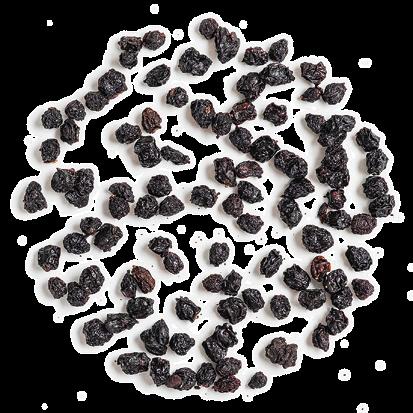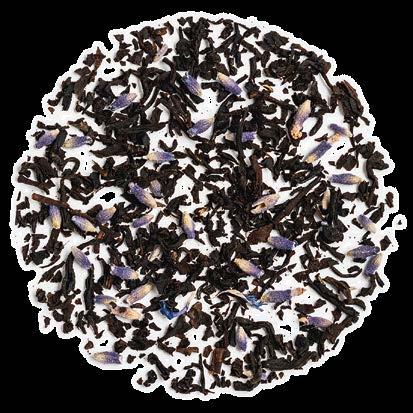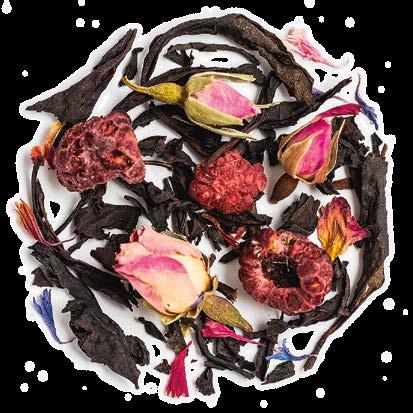
3 minute read
Our cupof tea
HOW LOCAL TEA LOVERS ARE GROWING AND REIMAGINING AN ANCIENT DRINK FOR MODERN TIMES
BY JANICE QUIRT
• PHOTOGRAPHY BY ELAINE LI
There are no plowed fields, bank barns or other signs of traditional farming on Joey Lemieux’s Mono property, but like many of his neighbours, Joey has been planting, tending and harvesting crops for years. Instead of potatoes or soy, however, he grows and forages plants and fungi from his natural meadows and woods to make herbal teas.
Joey’s line of more than 50 teas includes ingredients such as the “healall plant” (Prunella vulgaris), wild bergamot and chaga mushrooms – all of which he dehydrates and tucks into unbleached wood pulp tea bags to sell under his Escarpment Gardens label at the Orangeville Farmers’ Market, online and in local shops. Joey’s teas meet the standards of the New Jerseybased Certified Naturally Grown group and he is working toward organic certification.
“This year we’re planting hundreds more birch trees, which chaga grows on, so that our chaga harvest can be even more sustainable in the future,” says Joey, who leaves about an inch of each mushroom behind on the tree to reproduce. The superfood, known for its antioxidant properties, stars in his Chaga Chai. Other offerings include Cedar Pine and Lemon Pear, the latter mimicking a first bite into juicy fruit.




Joey has been producing herbal teas – or tisanes; some purists will say only black tea is tea, so tisane is the correct term – in Mono since 2015. He’s part of a small but dedicated industry of local growers and purveyors who have created enough herbal, black and other tea blends to keep us all brewing for years.
Fellow Mono tea lover and gardening expert, Julia Dimakos, captures the momentum in her recently released DIY guide called Tea Gardening for Beginners, with tips for planting, growing and drying tea ingredients.
For Joey growing, creating and drinking herbal tea go well beyond those acts themselves. “It can deepen our relationship with the natural world.” Indeed, whether you’re just reflecting on the landscape outside your window or getting your routine Earl Grey caffeine hit first thing in the morning, you’re tapping into a horticultural and cultural tradition dating back thousands of years to China. Black, oolong, white and green tea all derive from the leaves or leaf buds of two varieties of the Camellia sinensis plant and are left to oxidize for different lengths of time. Black tea is left to oxidize the longest, resulting in a rich flavour and longer shelf life, says Maggie Morrison of Clearview Tea Co., which she founded in Creemore in 2012 with her mother, Rebecca Brown.

The tea plant isn’t hardy enough to grow in our Zone 5, so professional and amateur tea growers focus on a range of other plants. Those who create blends based on black and other teas derived from Camellia sinensis source those tea leaves from Canadian and international growers. While Julia Dimakos does shares tips for growing Camellia sinensis in her new book (her publisher is in California, where it is possible to grow it outside), local readers can turn to more than two dozen other plants anyone with a sunny plot or windowsill can propagate.
Lavender is one of those plants showing up in local teapots, thanks to a mini-boom in lavender farms across Headwaters. At Stonewell Lavender

Farm outside Erin, Lee Anne Downey has been creating teas using English lavender (Lavandula angustifolia) buds harvested from her fields since 2019. After being hung to dry for two weeks, the buds are separated from the stem and are ready to add to her gingerpeach, hibiscus-rosehip, and Earl Grey recipes. (For anyone concerned the flavour may be too floral, Lee Anne recommends steeping for a short time to start.)
“In the summertime we recommend an iced tea version made by steeping, removing the herbs and pouring over ice cubes.” Lee Anne also suggests various add-ons, including sparkling water and fruit syrup – for mocktails or even cocktails.
Grow your own
For those inspired by Joey and Lee Anne to nurture their own teas from the ground up, Julia’s guide is divided into sections on leaves, flowers, fruits and seeds, and roots commonly uses as teas. For her, growing these ingredients for tea was the next logical step as she tended to her family’s 7,000-square-foot kitchen garden. “I thought if I can grow my own food, why not grow plants that can be used for tea?” she says. “I started with mint and chamomile, and then increased from there. I expand my tea garden each year, adding new ingredients.”

Julia starts annuals such as roselle (also known as hibiscus), lemongrass, lemon verbena, holy basil and chamomile from fresh seeds each year. Mint, lemon balm, red clover, anise hyssop, sweet violets and strawberries are perennials and have no trouble growing in our climate. Julia has an orange tree that she grows indoors all winter, and then moves outside for the summer. “With some creativity you can grow just about anything,”
If starting plants from seed, Julia recommends doing so indoors in January or February to give them a head start on spring, placing them under a grow light or in a sunny southwest-facing window. Starter plants can be purchased at a nursery too. Her one major caveat: “I recommend growing mint in a large pot or it will take over your garden.










